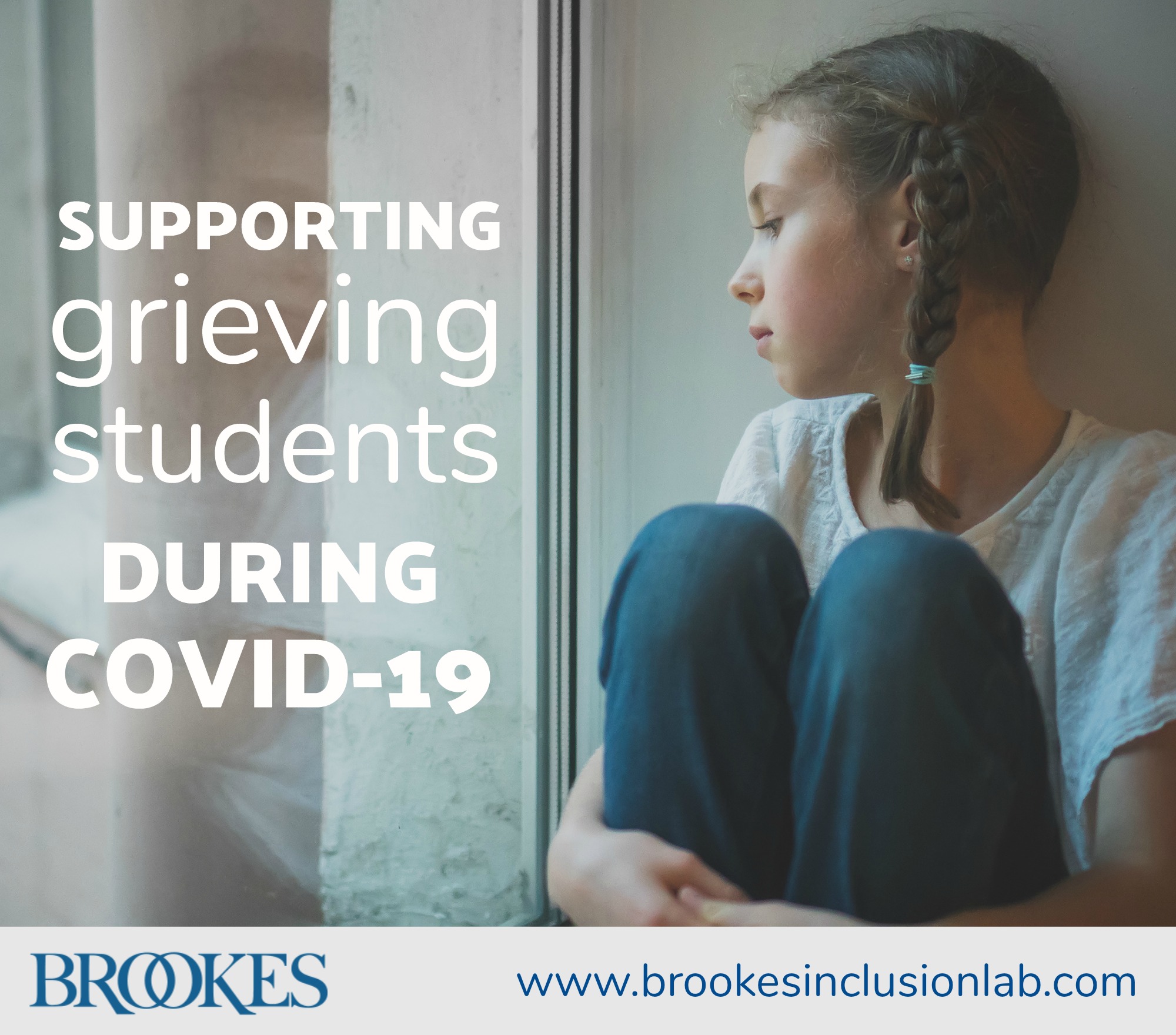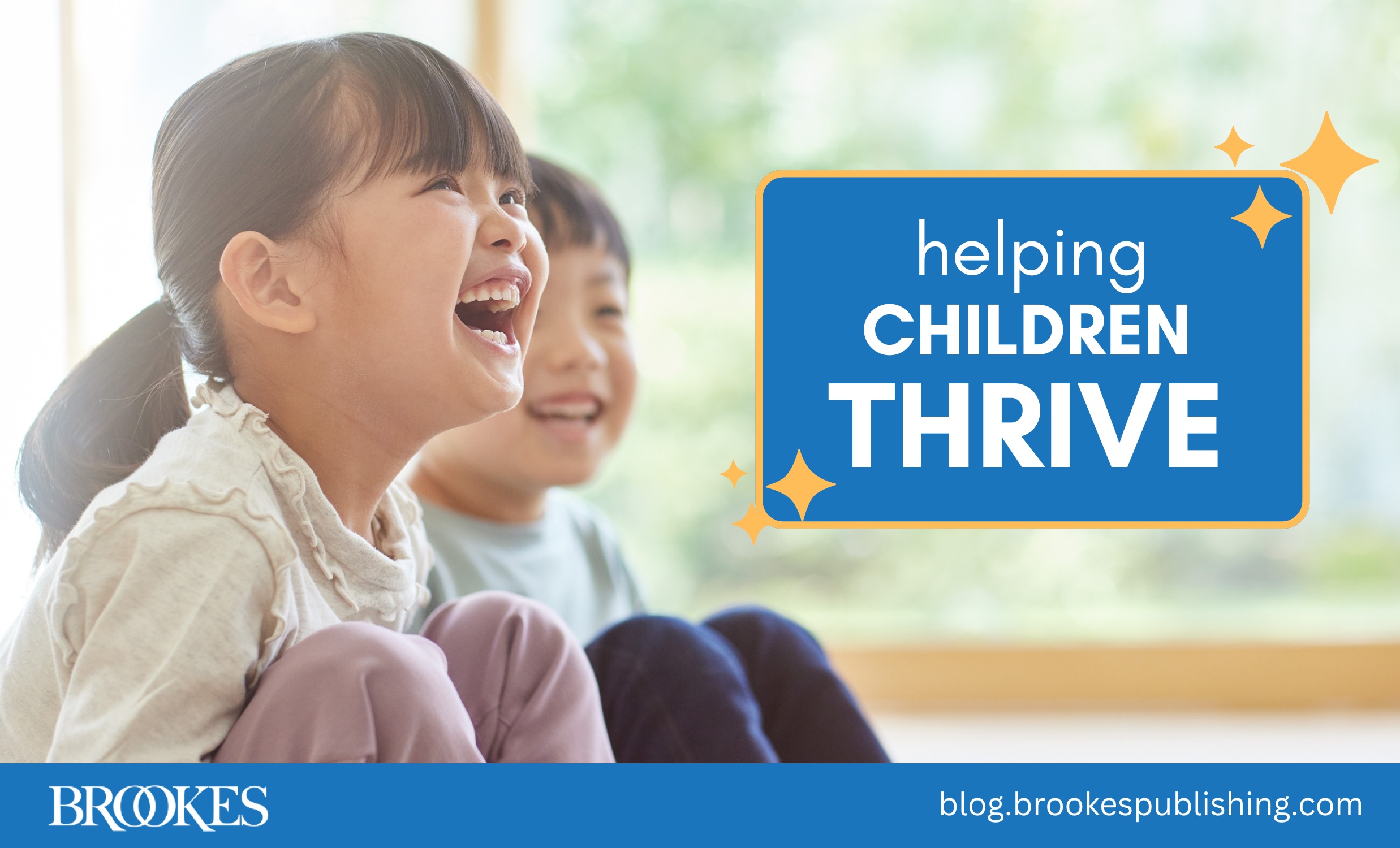GUEST POST: Supporting Grieving Students During the COVID-19 Pandemic
September 2, 2020
Loss and grief are a part of life for many students—and in this era of COVID-19, the grieving process can be complicated by an array of other factors, from social isolation to the effects of cumulative losses in the community. As an educator, how can you best help students who are navigating a complex grieving process, even when you can’t meet with them face to face?
Today the Inclusion Lab is pleased to welcome Marcia Quackenbush, MS, MFT, MCHES, to discuss ways to support grieving students in this uniquely challenging time. A contributor and advisor for the National Center for School Crisis and Bereavement (NCSCB) and co-author of The Grieving Student: A Teacher’s Guide, Marcia is here to offer some valuable insights and practical steps educators can take to provide meaningful and sensitive help to grieving students.
(Note: Many of the points in this post come from the work of NCSCB and its director, David J. Schonfeld, MD, FAAP, an expert on childhood bereavement and school crisis and co-author of The Grieving Student.)
***
I ran into my neighbor Logan the other day. I’ve watched this boy grow from a stubborn toddler of 2 to a thoughtful young man of 17.
School’s starting soon and will be entirely virtual in our district. “How’s that feeling for you?” I asked him.
Anger flashed through his eyes. “I want my senior year,” he said bitterly. “I’ve been waiting so long for this!” Then his features softened. “But it’s not about me, is it? We’ve got to take care of each other. This is how we do it.”
Our students are beginning a school year unlike any they have ever seen. Like Logan, many have mixed feelings about this. We may see frustration, excitement, loneliness, obstinance, or a willingness to try new things. Some students are doing well with remote learning, but others are falling behind.
Many children and teens are also scared. They are fearful about the course of the COVID-19 pandemic. They have questions and don’t know where to get reliable answers.
Since you last saw your students, some of them may have experienced the death of a friend or family member. This might be a death directly related to the pandemic or something entirely separate.
What is this like for students? What does grief look like during a pandemic? And what do educators need to know and do to support students who are navigating a grief process right now?
Loss Is Common in Children’s Lives and Educators Can Help
Over the course of their school experience, most students will experience the death of a loved one. By the time they leave school, 9 in 10 will have lost a close family member or friend. One in 20 will have lost a parent.
Despite this, 93% of classroom educators have never received training on how to support grieving students. This is tragic because some fairly simple steps can make a world of difference to a student. Education about grief and loss can also help peers understand how to reach out when a classmate is grieving. The Grieving Student: A Teacher’s Guide, which I co-authored with David J. Schonfeld, MD, offers guidance for all educators. There are also a number of excellent resources available at the website of the Coalition to Support Grieving Students.
Grief During a Pandemic
Every loss is distinct and all children grieve in their own unique way (for brevity, I’ll be using “children” to refer to all K-12 students). There are also a number of features among most children who are grieving. One of the distinctive things about COVID-19 is that many characteristics of this pandemic intensify already common features of grief among children. For example:
- Grieving children are frightened about their own health or that of people close to them. After a death, children realize how deeply unpredictable the world can be. It is common for them to worry that they or others might also die. In this pandemic, these are actual outcomes in some cases, and many students are frightened by this.
- Grieving children often feel isolated. Grief is a profound personal experience. Grieving children may have trouble expressing what this means to them. Friends sometimes withdraw, not knowing what to say or do. Educators who are unsure how to help may act as if nothing has happened. Family members may be struggling with their own deep grief. In the COVID-19 world, physical distancing measures and school closures exacerbate isolation and make it even more difficult to seek or offer support.
- Grieving families often feel overwhelmed. It can be difficult for grieving families to manage simple daily tasks—shopping, cooking, cleaning. During this pandemic, most families have also experienced being overwhelmed, especially when they are dealing with such things as shelter-in-place orders, remote schooling, remote work, inability to rely on family members for childcare, or the risks they face if they are essential workers.
- Grieving children experience secondary losses. Many things can change for a child after a death. For example, if a parent dies, the family may need to move in with relatives or find less expensive housing. The child may attend a new school. The family’s friendship networks might change. These secondary losses compound the child’s feelings of grief. In this pandemic with its associated financial challenges, many families are having to make exactly these kinds of changes and adjustments. For some children, the death of a family member has made it difficult to meet basic needs such as food and shelter.
- Cumulative loss is especially challenging. After a natural disaster, an act of terrorism, a mass shooting, or in communities with high levels of violence, multiple deaths may occur. Children do not “get used to” these losses. In fact, they become more sensitized to death. But they may also learn not to express their thoughts and fears to adults because they perceive that this makes the adults uncomfortable. Some neighborhoods have been severely affected by the COVID-19 pandemic. The National Center for School Crisis and Bereavement has worked with schools that have experienced over 100 COVID-related deaths (educators, parents, students). These students have lost family members, friends, and teachers. Their entire community is grieving. It is difficult for students to find sufficient support in these circumstances.
- Grieving children often experience academic challenges. It is difficult to concentrate during acute grief. Children may feel distracted, exhausted, irritable, fearful, or immensely sad. While these changes are usually temporary, children with pre-existing learning challenges can have a particularly hard time. In this pandemic, with both educators and students learning how to work remotely, academic difficulties are also common.
Practical Steps for Educators
Educators across the nation are learning how to provide more effective education to students with remote learning. They are also learning how to offer meaningful support to students during this time of national crisis, when it may not be possible to meet face-to-face. The basic steps outlined in The Grieving Student are still appropriate and relevant, but the style of delivery may be different during the pandemic.
Here are some ideas for educators:
- Set up ways to check in personally with students. Most teachers invite students to touch base if they have questions about an assignment or their work. Whether your teaching is in-person, hybrid, or distant, be sure such options are available to students.
- Be proactive. Acknowledge challenges and loss in these times. Mention to students that these are difficult times and that they are all facing different types of challenges. Name some of those challenges explicitly—not having a private space to think or do schoolwork; missing connections with friends or participation in sports; worrying about the future; for some, the death of a loved one. This kind of conversation shows that you are able and willing to discuss difficult issues. Let students know that some of these situations may affect their feelings, their ability to concentrate, or the academic work they do. Invite them to communicate with you if they have any concerns.
- Reach out to parents. Provide channels of communication with parents and invite them to contact you if they have any concerns about their children’s welfare or schoolwork.
- Reach out to grieving students personally. If you do learn that a student has experienced the death of a loved one, reach out personally with a simple message of condolence. If you’re not quite sure what to say and what to avoid, check out one of my favorite guidance resources for this kind of contact, a publication at the Coalition to Support Grieving Students called “What Not to Say.”
You can find a number of additional resources specific to the pandemic at the Coalition’s website, including sample scripts for the first day of school and webinars geared toward educators and helping professionals.
Take Care of Yourself
My colleague David Schonfeld has been sharing this important piece of wisdom in his recent webinars:
Supporting grieving students can be difficult in the best of times; this is not the best of times.
Your support to students and their families is critical. Indeed, the need has never been greater. We are all doing our best to manage uncharted terrain and unprecedented demands. We may not always be sure about what to say or do when one of our students is grieving. We may not have access to our usual resources for our own support—informal talks with colleagues by the coffee station, relaxing dinners with friends, a chance to stand face-to-face with students and see their expressions as they grasp new concepts.
Remember that when you make the effort to reach out to a grieving student, you are making a difference that counts. Your students will remember this period in their life, the losses they suffered, and the sincere assistance you offered them.
***
Many thanks to Marcia Quackenbush for visiting the Inclusion Lab today and sharing these critical tips for teachers as the new school year gets under way. For more tips and guidance on helping students who are navigating grief and loss, be sure to explore the resources from the Coalition to Support Grieving Students and check out the book The Grieving Student.
 The Grieving Student
The Grieving Student
A Teacher’s Guide
By David Schonfeld, MD, & Marcia Quackenbush, MS, MFT, CHES
Teachers can be a critical lifeline for a grieving child—and this practical guidebook will help them provide sensitive support to students of all ages. David Schonfeld and Marcia Quackenbush guide teachers through a child’s experience of grief and loss, illuminate the classroom issues that grieving may trigger, and empower teachers with real-world tips, strategies, and insights.
Throughout the book, powerful vignettes and examples give teachers a vivid inside look at what their students may be feeling and how an educator’s words and actions can make a difference. And because teachers may struggle with their own emotions as they help their students, the book shows them how to manage a wide range of feelings, from discomfort with discussing death to personal identification with the child’s loss.
LEARN MORE NOW




Write a Comment
Your email address will not be published. Required fields are marked *
Post a Comment